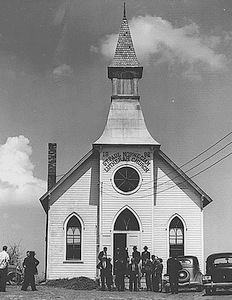Congregational Naming Patterns

Most Frequent Names in Minnesota
- Zion
- Immanuuels
- Vor Frelser
- Trefolingheds
- Bethlehem
- Bethany
- St. Pauli
- Bethel
- St. Petri
- St. Olafs
Preliminary analysis shows that less than half of congregations in Minnesota used place names rather than bibilical or other religious names and suggests further questions about the significance of those names.
Place names may be a clear reference to a feature of the surrounding landscape. Ten Mile Lake Lutheran, in Otter Tail County, is one of many examples. Some place names simply repeat the name of the town or township in which the church is located. English, or perhaps more accurately American, names make this pattern obvious.
Norwegian names usually recall members’ prior residence in Norway. This is true for Holden Lutheran, near Kenyon in Goodhue County. In other cases both the town name and the congregational name do so. Trondheim Lutheran and the small village of Trondheim in Rice County were founded by Norwegians from that area.
Religious names fall into several categories. The ten most frequently used names include four biblical places, three saints, and three references to God. Zion is the most frequent. Others are Bethlehem, Bethany, and Bethel: sometimes with Norwegian spelling, sometimes English. St. Paul, St. Peter, and St. Olaf are most common; St. John is in the top fifteen. Emmanuel, Our Savior (Vor Frelser), and Trinity (Trefolingheds) are second, third, and fourth usually with Norwegian spelling.
Less often religious names refer to a religious quality (Hope in Wheaton, Traverse County) or signal the congregation’s theological commitments (Svedrups in Underwood, Otter Tail County). More unusual: Pentecost (English) Lutheran in Minneapolis and Mesopotamia in Alvarao, Marshall County).
A next step will be to sort names by synod, date of founding, and location. That will provide numerical answers to some questions. Are Norwegian place names more frequent in rural areas? Are religious names used more often in one synod or another? Other questions require different sorts of responses. Why, for example, did a congregation near Dalton try out two township names and finally settle on Bethel? Does the frequent use of Zion suggest that members regarded the United States as a promised land?
